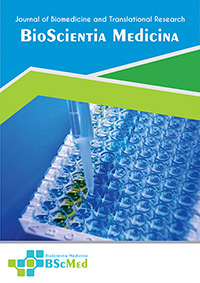Main Article Content
Abstract
Background: Soft tissue sarcomas (STS) represent a diverse group of malignant mesenchymal neoplasms with considerable histological variety and differing degrees of malignancy. Programmed Death-Ligand 1 (PD-L1) expression is a crucial immunotherapy target in various cancers, but its role and expression patterns in STS, particularly within the Indonesian population, remain inadequately defined. This study aimed to investigate the differences in PD-L1 expression between low-grade and high-grade STS and to determine the correlation between PD-L1 expression and histological grading in an Indonesian cohort.
Methods: This analytical observational study utilized a cross-sectional design, incorporating 29 archival paraffin-embedded tissue blocks from STS patients diagnosed at Dr. Saiful Anwar Regional General Hospital, Malang, Indonesia. PD-L1 expression was assessed immunohistochemically using the monoclonal antibody clone 22c3, and scoring was performed using the Combined Positive Score (CPS). Statistical analyses, including the Mann-Whitney U test and Spearman correlation, were employed to evaluate differences and correlations.
Results: The majority of STS cases (89.7%) exhibited negative PD-L1 expression. The mean PD-L1 CPS was 0.1429 in low-grade STS and 0.233 in high-grade STS. No statistically significant difference in PD-L1 expression was observed between the low-grade and high-grade groups (p=0.620). Furthermore, Spearman correlation analysis revealed no significant association between PD-L1 expression (numeric CPS and categorical positivity) and histological grade (r=0.094, p=0.629 for CPS; r=0.102, p=0.600 for interpretation).
Conclusion: This study found no significant difference in PD-L1 expression between low-grade and high-grade soft tissue sarcomas, nor a significant correlation with histological grade in the investigated Indonesian patient cohort. These findings suggest that PD-L1 expression, when assessed independently, may not be a reliable prognostic biomarker based solely on tumor grading in STS. Further research with larger sample sizes, encompassing diverse histological subtypes and incorporating additional immune biomarkers, is warranted.
Keywords
Article Details
As our aim is to disseminate original research article, hence the publishing right is a necessary one. The publishing right is needed in order to reach the agreement between the author and publisher. As the journal is fully open access, the authors will sign an exclusive license agreement.
The authors have the right to:
- Share their article in the same ways permitted to third parties under the relevant user license.
- Retain copyright, patent, trademark and other intellectual property rights including research data.
- Proper attribution and credit for the published work.
For the open access article, the publisher is granted to the following right.
- The non-exclusive right to publish the article and grant right to others.
- For the published article, the publisher applied for the Creative Commons Attribution-NonCommercial-ShareAlike 4.0 International License.





